Shark Meshing (Bather Protection) Program 2022/23 Annual Performance Report - 143 Animals Found Dead In The Nets In 2022/23; Trigger Point For The Objective Of ‘Minimising The Impact On Non-Target Species And Threatened Species’ Was Tripped In 2022/23 For 'Seals' - Whales Getting Caught In Nets - Smooth Hammerheads Dying By The Hundreds
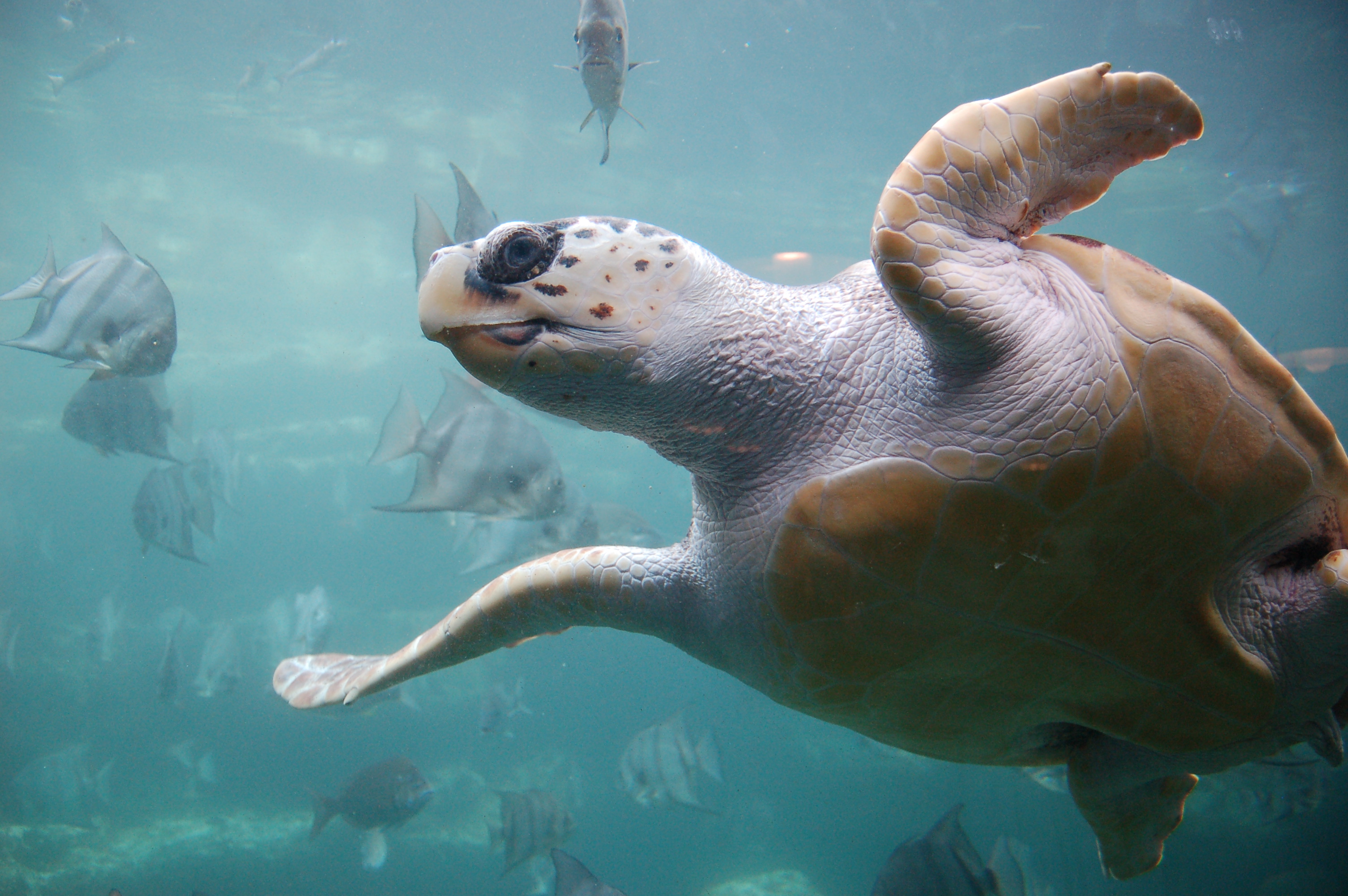
Underside of a loggerhead sea turtle as it swims overhead. Photo: Lance Miller
The Shark Meshing (Bather Protection) Program 2022/23 Annual Performance Report has just been released and records 34 non-target species were caught in shark nets in our area during the reporting period - of that number 21 died before they could be released. None of these caught locally were target shark species.
Two of these were deaths of Loggerhead turtles, one at Mona Vale and one at Narrabeen, a species listed as Endangered in NSW and at Australian Commonwealth Government level. Loggerhead turtles nest from late October, reaching a peak in late December and finish nesting in late February or early March.
Mona Vale's net also led to the drowning death of a Green Turtle, listed as Vulnerable in NSW and at Australian Commonwealth Government level. In recent years species of turtles nesting locally - Green Turtle eggs were found at North Steyne in January 2020 and more recently the Listed as Endangered Loggerhead Turtle eggs were found at Shelly Beach on the Central Coast in January 2023.
Two beach walkers found the nest after seeing a turtle crawl into the waves and promptly called WIRES at 5.30 am, triggering alerts to NSW National Parks and Wildlife Service (NPWS), NSW TurtleWatch and Central Coast Council.
The Central Coast Council’s Director Environment and Planning, Alice Howe, said Council had built a temporary fence around 15 m2 of the sand dune to protect the site and is calling on the community to help as well.
“It’s exciting and extremely rare to have a loggerhead nest in the dunes here, which is why it’s important people remain outside the fenced area and obey the signs to help keep them safe,” Dr Howe said.
“The mother has buried the nest a short distance below the sand surface, in an area popular with beachgoers. People could inadvertently crush eggs or collapse the nest simply by walking over the top.
“Predators also pose a risk – such as foxes or dogs digging up the eggs, as well as goannas and birds, all of which are potential egg thieves and nest raiders.”
The nest is of great interest to turtle conservationists as it is unusual this far south, NSW NPWS Marine Wildlife Team Leader Duane March said.
“This southern shift in nesting could be attributed to warmer water temperatures being experienced further south on the east coast of Australia in recent years,” Mr March said.
“Climate change is a massive threat to sea turtles, as increasing nest temperatures further north are producing more female hatchlings.
“So to have a nest in a cooler climate that will produce predominantly male hatchlings is important for this species’ long-term viability.”
Loggerhead Turtles are found in tropical and temperate waters off the Australian coast. In NSW they are seen as far south as Jervis Bay and have been recorded nesting on the NSW north coast and feeding around Sydney. In Australia the Commonwealth lists two unique breeding populations of Loggerhead Turtles. The eastern Australian population nests on the southern Great Barrier Reef and adjacent mainland coastal areas, including Mon Repos, Wreck Rock, Wreck Island, Erskine Island, and Tryon Island. Major nesting areas for the Western Australian population include Muiron Islands, Ningaloo Coast south to about Carnarvon and islands near Shark Bay, including Dirk Hartog Island.
In south eastern Queensland, mating starts about late October, reaching a peak from November to early December. Loggerhead turtles nest from late October, reaching a peak in late December and finish nesting in late February or early March. Hatchlings emerge from nests from late December until about April with most hatching from February to early March.
Compared to previous years reports the 2022/23 statistics show a significant drop in non-target species being caught in nets in this area - leading some to state that there is a decline in all marine species in our waters. Valerie Taylor, at a World Ocean Day celebration at Mona Vale surf club in June 2023 said that when she began diving in 1958, she would see enormous numbers of marine creatures in only 3 metres of water. These days you saw none, she said.
Similarly, those who have been fishing in our area for decades recall catching snapper that weighed upwards of 6 1/2 pounds during the 1950's and struggle to catch anything near that size today.
For 'Sydney North' the non-target species were; Australian Angel Shark (1), Bronze Whaler (1), Dusky Whaler (2), Smooth Hammerhead Shark (12), Greynurse Shark (1), Southern Eagle Ray (2), Australian Cownose Ray (2), Bottlenose Dolphin (1), Green Turtle (1), Loggerhead Turtle (1), Leatherback Turtle (1), Yellowfin Tune (1).
For 'Sydney Central' these were Smooth Hammerhead Shark (1), Greynurse Shark (1), Southern Eagle Ray (1), unidentified ray (1), Common Dolphin (2), Loggerhead Turtle (2).
Sydney North comprises the beaches from Palm Beach to Warriewood. Sydney Central runs from Narrabeen to Manly.
The previous 4 year of reports record:
- 2018/19; 395 marine animals with 372 non-target animals - 238 of those 395 died before they could be released, 50 species caught in our area (Sydney North + Sydney Central) - 2 were target animals, 27 died
- 2019/20; 480 marine animals with 50 target sharks and 430 non-target animals - 284 of that 480 died before they could be released, 63 species caught in our area - 4 were target animals, 41 died
- 2020/21; 375 marine animals were caught with 40 target sharks and 335 non-target species - 231 died before they could be released, 76 species caught in our area - 6 were target species, 49 died
- 2021/22; 376 animals caught with 51 target sharks and 325 non-target animals - 234 died, 54 species caught in our area - 5 were target animals, 35 died
A total of 173 marine animals have died in nets in this area in the last 5 shark mesh years.
The available reports from 2012-13 records 49, 27 died, 2013-14 report records 84, 35 died, 2014-15 report records 64, 30 died, 2015-16 report records 151 (lots of rays released - 748 interactions over the whole SMP areas), 43 died in local nets - including a Hawksbill turtle that drowned in the Bilgola net, and 364 overall perished, 2016/17 report records 74, 33 died.
This makes a total of 342 that died in shark nets during the past decade via these available reports.
The reports are missing some data as that, for example, recorded in 2021/22 show nothing recorded for Sydney Central in the Detailed Catch Reports for – 16 March 2022 to 12 April 2022, and nothing recorded under Sydney North during 19 January 2022 to 15 February 2022 and 13 April 2022 to 30 April 2022. Those where there has not been anything caught are recorded as 'nil catch' against that section.
Similarly the the 2018/19 report records no Detailed Catch Report for Sydney Central during 24 November 2018 to 21 December 2018, and no data for Sydney North during 27 October 2018 to 23 November 2018.
A new report, 'Investigation into NSW Shark Meshing Program June 2023' by Envoy Foundation identified "extremely concerning discrepancies in data", including a photo of a bird found in shark nets in 2019 not included in data for the 2018/19 or 2019/20 catch data.
"There is an image of little penguin, also known as a fairy penguin — which are protected in NSW," Mr Borrell said.
"It's an image of a thing that was been pulled out of shark nets, but the animal does not appear in the data. How often does that happen?"
The report states the Envoy Foundation 'attempted to identify the bird but were not able to from the image or by speaking with the Protected Species and Communities Branch of the Biodiversity Conservation Division of the Department of Agriculture, Water and the Environment.'
The answer they received was:
“Unfortunately without the last digit (I can’t make it out either) it could be one of 10 birds. Each of the 10 birds were all banded in 2002 on one of three dates 22 OCT 2002, 29 Oct 2002 or 5 NOV 2002. The banding of these birds occurred at one of two locations:
Manly Point, Sydney Harbour; or Collins Beach, Spring Cove, Sydney Harbour. That is about as much as I can provide without the last digit to actually individually identify the specific bird.''
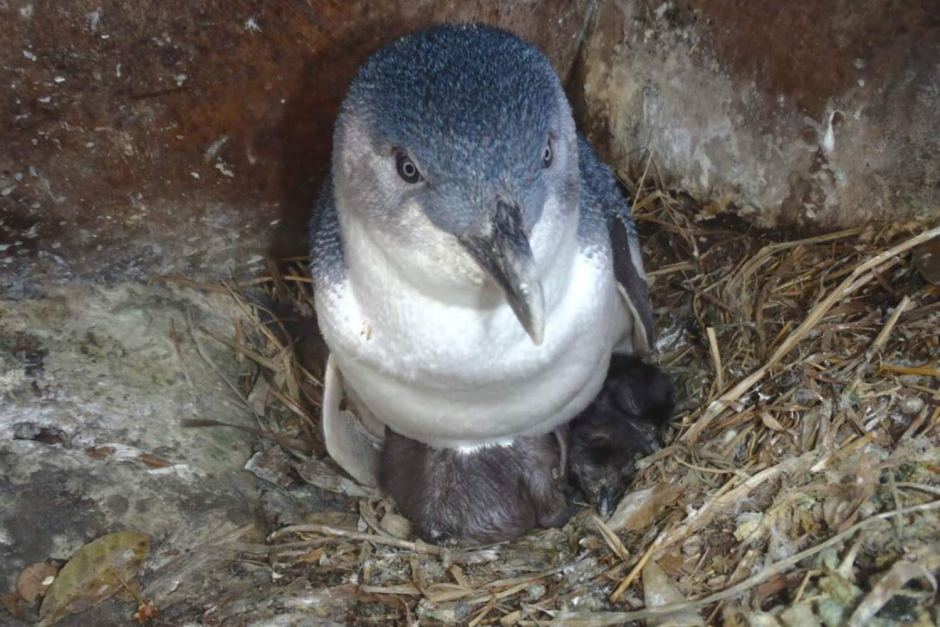
''Additionally, images obtained show pregnant female sharks caught and killed that have been cut open, exposing a uterus full of pups. These pups are not included in the reported count of sharks killed, and any assessment made is done based on understated data.'' the report states
Another Little Penguin turns up in the 2015/16 data - although this is added in via an Addenda; ''‘There were two interactions with sea birds: one Little Penguin and one Australasian Gannet.''
The Little Penguin died at Coogee, the Australasian Gannet died at Narrabeen.
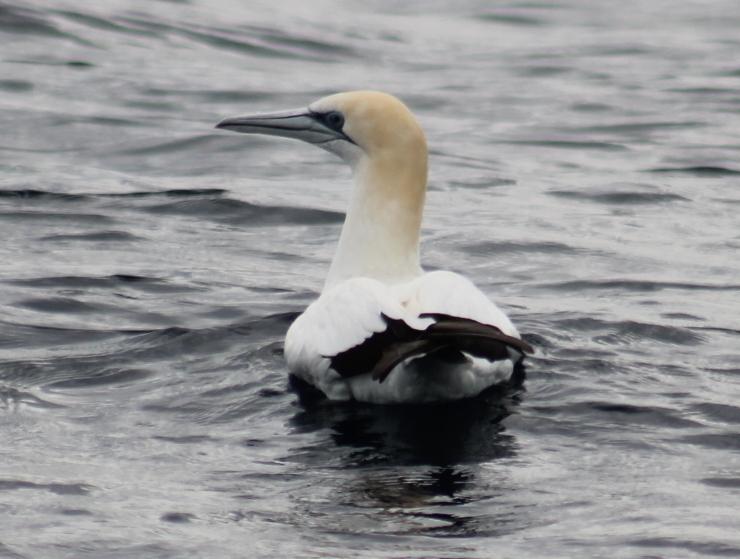
Gannet photographed off Palm Beach. Photo: A J Guesdon
The Envoy Foundation report covers the many shortcomings of the program in detail, including some that may not have been previously discussed. For example, the report states, trigger points should effectively alert the program's impact on threatened species, but instead, are reactive. Furthermore, when trigger points are tripped, there is no contingency plan for decisive and practical actions.
The shark mitigation strategy in New South Wales (NSW) has slowly been evolving over recent years. The introduction of Shark-Management-Alert-In-Real-Time (SMART) drumlines and shark surveillance drones has provided hope to those in the community who want to see the program cease its current lethal methods. But the State has been seemingly reluctant to make the final transition away from the lethal Shark Meshing Program (SMP) that still operates for eight months of the year.
The 2022/23 SMP report states;
A total of 228 marine animals were caught in the SMP during the 2022/23 meshing season, comprised of 24 target sharks and 204 non-target animals. Eighty-five animals (37%) were released alive.
The 24 target sharks comprised 18 White Sharks and 6 Tiger Sharks.
The 204 interactions with non-target animals consisted of:
• 120 non-target sharks, including Greynurse Sharks; a Great Hammerhead Shark; an Australian Angel Shark; Smooth Hammerhead Sharks; *Broadnose Sevengill Sharks; *Whaler Sharks (Bronze Whalers, Common Blacktip Sharks, Dusky Whalers, a Spinner Shark, an unidentified whaler species), and *Shortfin Mako Sharks; (* reported as target sharks prior to 2017).
• 58 rays, including Southern Eagle Rays; Australian Cownose Rays; Black Stingrays; White Spotted Eagle Rays; Smooth Stingrays; and unidentified rays.
• 14 marine reptiles comprised of: 6 Leatherback Turtles; 5 Loggerhead Turtles; and 3 Green Turtles.
• 10 marine mammals comprised of: 6 Indo-Pacific Bottlenose Dolphins; 2 Common Dolphins, and 2 seals (Australian Fur Seal and New Zealand Fur Seal).
• 2 interactions with finfish (Longtail Tuna, and Yellowfin Tuna).
51 (22%) of the interactions were with threatened species comprised of: 18 White Sharks; 16 Greynurse Sharks; 6 Leatherback Turtles; 5 Loggerhead Turtles; 3 Green Turtles; 2 seals (1 Australian Fur Seal and 1 New Zealand Fur Seal), and 1 Great Hammerhead Shark.
Eight (3.5%) of the interactions were with protected species comprised of: 6 Indo-Pacific Bottlenose Dolphins and 2 Common Dolphins.
The observer program was implemented with observers present on 22% of all net checks (hauls/runs) undertaken by SMP contractors. Observers continued to focus on ensuring collection of biological samples in accordance with the Strategic Research and Monitoring Program. Biological samples were taken from 101 of the 143 animals found dead in the nets in 2022/23.
The trigger point for the objective of ‘minimising the impact on non-target species and threatened species’ was tripped in 2022/23 for seals.
Both the entangled seals were entangled in the Central Coast South region.

Seal on North Avalon Beach rocks. Photo: A J Guesdon
Carnage for Smooth Hammerhead Sharks
As can be read, Smooth Hammerhead Sharks were again found dead in Palm Beach and Whale Beach nets. In total 57 were found in the nets during the 2022/23 data period and 56 died.
The data available for this species shows 52 Smooth Hammerheads (51 dead, 1 released alive) in 2021/22, the 9 in this area all dead, 60 Smooth Hammerheads (58 dead, 2 released alive) in 2020/21, the 13 found here all dead, 99 Smooth Hammerheads (all dead) in 2019/20 including 13 from our area, 87 Smooth Hammerheads (86 dead, 1 released alive) in 2018/19 - 9 from here in that total, 78 Smooth Hammerheads (77 dead, 1 released alive) in 2017/18 - 10 in our area, 71 Smooth Hammerheads (all dead) in 2016/17 - 16 killed here, 112 Smooth Hammerheads (110 dead, 2 released alive) in 2015/16 - 19 killed here, 42 Smooth Hammerheads (41 dead, 1 released alive) in 2014/15 - 15 found here, 22 Smooth Hammerheads (all dead) in 2013/14 - 11 of them found here(50% of those recorded), 19 in 2012/13, all dead - 10 found here.
Hammerhead sharks are not considered dangerous to humans; the Australian Marine Conservation Society says there has never been a death attributed to a hammerhead shark in Australia.
Commercial fishing is the biggest threat to hammerheads, with 370t of hammerhead sharks legally allowed to be caught every year in Australian waters (1). DNA tests of shark meat in Australian fish ‘n chip shops have revealed that endangered scalloped hammerheads are being unwittingly consumed, often labelled generically as ‘flake’.
The trade in these species is regulated by the Convention on International Trade in Endangered Species of Wild Fauna and Flora (CITES) convention. Australia is a signatory to the convention. Any trade of CITES listed species must conform to a Non-Detriment Finding (NDF) which contains management guidelines to ensure the species survival is not threatened by trade. An NDF is a decision and report made by the Federal Government using information provided by an independent and objective scientific assessment of CITES listed species.
AMCS has questioned the findings in the NDF report that the current levels of hammerhead harvest are sustainable and instead recommends a more precautionary approach that restricts catch and prohibits export in light of:
- The lack of scientific data on population numbers, population range and impacts from outside Australian waters.
- Uncertainty around the numbers of hammerheads currently killed in Australian fisheries due to lack of reporting to species level, lack of bycatch reporting and possible illegal and unreported fishing.
- The globally critically endangered (endangered in Australian waters) or vulnerable conservation status of the species, including in Australian waters.
- The life history characteristic of hammerheads (long lived, late maturing with few offspring) making them slow to recover from excessive fishing pressure.
Hammerhead sharks are also threatened by culling through lethal shark control programs. In six years (2012-2018), 592 hammerheads sharks have been culled at an average of 99 per year.
Since 1937 in NSW and 1962 in QLD, lethal shark control programs have been carried out each year using either nets or drumlines. How many have really been destroyed, along with the masses of non-target species, In New South Wales is unknown - however the Animal Justice Party states it is approximately 19, 000 animals.
Nets causing Entanglements during Whale Migrations
There is also a growing concern about nets being in the waters when whales are migrating, as can be seen by the calls for their removal after a young whale was trapped in a net at Whale Beach on Saturday October 16th 2021 - an entanglement which took hours to resolve, distressing the poor young whale caught.
Numerous recent and older studies state that Baleen whales which had died after stranding or entanglement or washed ashore as a carcass, were found to have significantly higher cortisol levels than live whales, particularly for those animals that had experienced prolonged trauma (e.g. stranding, entanglement) prior to death.
Another factor that increases stress and poor health in whales is acoustic disturbance caused by increased shipping and vessel traffic as it overlaps with the frequencies that are primarily used for communication, navigation and foraging.
There were five reports of nets being damaged during the 2022/23 season - 2 in our area:
- 18 October 2022, Sydney North contractor reported a large 3 x4 m hole in the Bilgola net. Mesh appeared to be torn so suspected to be from a large animal. All ropes and mesh recovered.
- 1 May 2023, Sydney North contractor reported that the Newport Beach net had a hole in it approx. 2m x 2m in size. Suspected interaction with a large animal.
There was one report of vandalism during the 2022/23 season:
- 12 September 2022, Sydney North contractor reported that the end marker float of the net at Bilgola beach had been cut off. Net was hauled and replaced.
Previous years record one young whale as not so lucky - the lost or damaged nets reported during the 2013-14 season record:
- Sydney North contractor reported a Humpback Whale calf entangled in the Mona Vale net on 22 October 2013. The NPWS whale disentanglement team was mobilised, however the 5m whale calf died and was retained whole for necropsy by Taronga Zoo
And:
- Sydney North contractor reported on 25 October 2013 that a net at Warriewood had a large tear in it, and reports from NPWS suggest that a whale swam through it.
- Sydney Central contractor reported on 13 December 2013 that nets at both Curl Curl and Harbord appeared to have been cut to release a captured animal.
In 2014-15:
- Sydney Central contractor reported on 30 September that a net at North Steyne was damaged due to what appears to have been an anchor dropped through the middle of the net that cut the net in half
- Sydney North contractor reported on 24 April the Avalon net was missing, this was due to the severe storm activity that week.
The following lost or damaged nets were reported during the 2015-16 season:
- Sydney Central contractor reported on the 14th of September the Dee Why net had been cut along the float line.
- Sydney Central contractor reported on the 21st of November the Curl Curl net had been vandalised.
- Sydney Central contractor reported on the 22nd of March the Dee Why net was missing after a significant storm event.
- Sydney Central contractor reported on the 28th of March the Manly net had been vandalised and the southern anchor and one dolphin alarm missing.
The following damaged, vandalised or lost nets were reported during the 2021/22 season - a sample from the 17 incidents recorded:
- 17 September 2021, a yacht became tangled in a Cronulla net and had to be cut free.
- 18 September 2021, Central Coast South contractor reported that the Umina Beach net had a hole in it approx. 3m x 2.4m in size. Suspected interaction with a whale or large shark.
- 30 Sept 2021, Central Coast South contractor reported that the Avoca Beach net had significant damage (approx. 20m); believed to be from a whale. All ropes and mesh were recovered.
- 13 October 2021, Sydney South contractor reported that the Bronte net had suffered a large amount of damage from a suspected whale interaction. All ropes and mesh were recovered.
- 16 October 2021, Mona Vale net cut from top to bottom after Water Police released a shark caught in the net.
- 16 October 2021, Whale Beach net destroyed after whale entanglement requiring the whale to be cut free by NPWS.
- 18 October 2021, Sydney South contractor reported that the Wanda net had the top rope cut through by a suspected boat propeller.
- 15 November 2021, Sydney North contractor reported that the Palm Beach net had a large section (approx. 4 - 5m) missing and the mesh was snapped, suspected caused by a large animal. The missing mesh was not recovered.
- 30 January 2022, a yacht was reportedly caught in the Cronulla net and had to cut the float line to free the keel from the net.
- 16 February 2022, Sydney North contractor reported a large tear in the Bilgola net from a suspected large animal interaction.
- 05 March 2022, Sydney North contractor reported damage to Newport, Bilgola, Mona Vale, Avalon and Warriewood nets due to the extreme weather/sea conditions at the time.
The extreme and adverse weather conditions throughout the 2021/22 season meant that on several occasions many of the contractors removed one or more of their nets from the water to reduce the chance of losing nets.
Contractors report ‘suspected whale damage’ to nets when it is obvious that the net mesh and/or ropes have been torn, snapped or broken under strain, as opposed to being cut. These reports also coincide with the whale migration season.
There were eight reports of vandalism during the 2021/22 season, including:
- 2 September and 18 October 2021, Sydney North contractor reported that several whale and dolphins pingers had gone missing from Mona Vale and Warriewood nets.
The missing nets become hazards in the ocean, entangling other whales and boats - including that one found on November 15 2021 at the Palm Beach net.
As whales are being spotted earlier than traditional migration north times, from April on, and seen way after they normally migrate south again, the calls from members of our local community for these to removed from the water during these migrations is likely to increase.
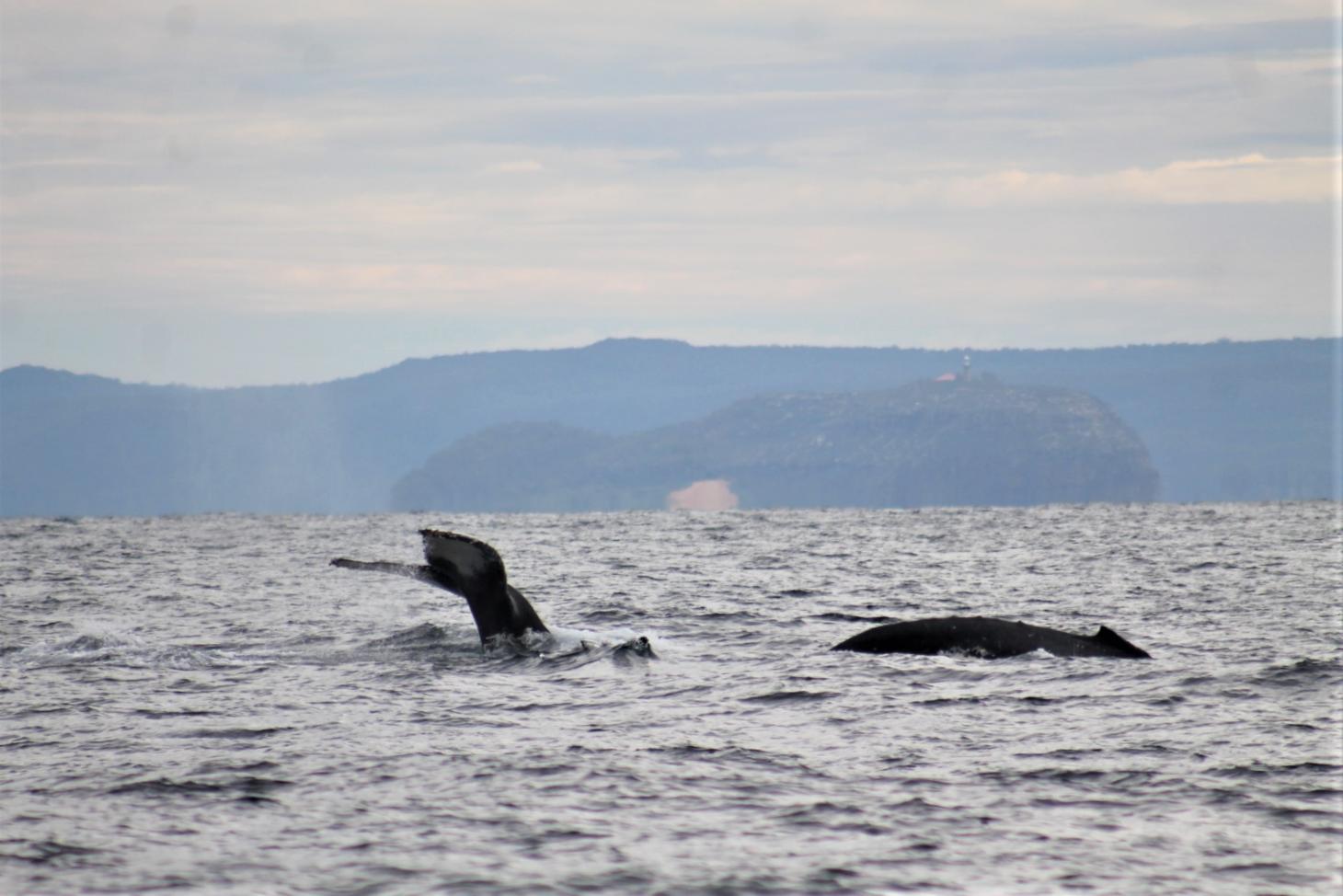
Changes to the Management Plan
In accordance with clause 9 of the JMA, the Management Plan and 2017 JMA were subject for review in 2022. The review by the Parties to the Agreement did not identify a need for any specific amendments to the 2017 JMA but specific amendments to the Management Plan were identified.
'A working group was established to make changes to the management Plan prior to the commencement of the 2022/23 season, with specific attention being placed on trigger point analysis of threatened species entanglements. The working group liaised with internal and external biometricians and research scientist to determine a ‘better’ more robust trigger point system, with the underlying feedback being that the lack of knowledge of population sizes inhibits the development of an effective analysis system. A Population Viability Analysis (PVA) system is currently being considered however this type of analysis is only done on a single species and may not be practical for the varying number of species caught in the SMP. '
'The complex nature of developing a new trigger point analysis system has delayed the release of the updated MP. Changes to the Management Plan will be made prior to the 2023/24 season', the report states.
On Wednesday, 28 April 2021 the Northern Beaches Council announced it is calling on the NSW government to remove shark nets on beaches in the Council area and replace them with a combination of modern and effective alternative shark mitigation strategies that maintain or improve swimmer safety and reduce unwanted by-catch of non-target species.
Council made the call in response to the Department of Primary Industries – Fisheries (DPI Fisheries) request for input from stakeholders on their preferred shark mitigation measures, following a five-year project considering the benefits and impacts of a range of mitigation measures.
A number of residents addressed the Council meeting the previous evening in support of shark net removal, including surfing champion Layne Beachley.
Then Deputy Mayor Candy Bingham said Council considered both the need to maintain or improve swimmer safety as well as the negative impacts on non-target marine species in reaching their decision.
“The effectiveness of shark nets has been questioned by many, yet their impact on other marine species is devastating,” Cr Bingham said.
“We have an aquatic reserve in Manly where turtles and rays are regularly seen by snorkelers, and up and down the beaches dolphins surf the waves alongside local board riders.
“The research conducted by DPI Fisheries found that 90% of marine species caught in nets were non-target species and that sharks can in fact swim over, under and around the nets anyhow.
“If the evidence is that there are other just as, or more, effective ways to mitigate shark risk, such as drone and helicopter surveillance, listening stations and deterrent devices, then we owe it to those non-target species to remove the nets.
‘We will be providing that feedback through this consultation process and look forward to the government implementing effective shark mitigation measures while protecting other important marine species.”
Six out of eight council areas that have shark nets on their ocean beaches, including the Northern Beaches, Newcastle, Waverley, Randwick, Central Coast, and Wollongong councils, then voted to submit to the NSW Department of Primary Industries that they no longer want shark nets deployed on their ocean beaches out of concern for the environmental impacts.
By late 2021, all eight NSW local councils with shark nets officially voiced their opposition to shark nets through council motions or through submissions during a consultation process with the NSW Government.
Conservation groups, Humane Society International Australia (‘HSI’) and the Australian Marine Conservation Society (‘AMCS’), have reiterated, after this years' data was released, their opposition to the nets, stating it is high time the shark meshing program in NSW was ended to make way for newer technologies that both improve swimmer safety and significantly reduce environmental impacts.
On August 1st 2023 HSI stated the data released today by the NSW Department of Primary Industries (DPI) revealed that 71% (162) of wildlife caught in the last shark net season were threatened or protected* species, and 76% (123) of these animals were killed. Additionally, 16 Critically Endangered grey nurse sharks were caught, with two found dead and 14 released. This is a serious blow to this fragile species, whose survival is not guaranteed after hours spent stressed in nets.
A staggering 89% (204) of marine animals caught in NSW shark nets during the 2022-2023 season were non-target species such as turtles, rays, dolphins and smaller sharks. Over half of these non-target animals (64%) were killed.
NSW’s Shark Meshing Program sees nets installed on beaches from Newcastle to Wollongong, every September until April. Every beach where a net is installed already has alternative, shark safety measures in place such as SMART drumlines, alert systems and drone surveillance.
This annual data comes at a critical time for the newly elected NSW government, who said they would “support the reassessment of shark nets to move towards non-lethal new technologies”. [1]
Four weeks out from the nets returning to beaches, Humane Society International (HSI) Australia and Australian Marine Conservation Society (AMCS) are urging the NSW Government to end the obsolete and destructive shark net program.
Lawrence Chlebeck, Marine Biologist and Campaigner at HSI Australia, said: “These figures tell the same tragic story every year when the NSW shark net data is revealed, and it’s why coastal councils and residents are fed up with the nets.
“Shark nets don’t discriminate. This season, 100% of dolphins and 50% of turtles caught in the nets were killed. How can we continue to justify a program so reckless with our precious marine life?
“Previous governments have viewed this issue through an outdated lens, which is why they blindly relied on 100-year old technology, in the form of nets. Modern solutions are already working and in place after decades of development, so it’s time for the new Minns Government to bring swimmer safety into the 21st century and consign the nets to history.”
Dr Leonardo Guida, shark scientist at AMCS, said: “Communities want modern-day beach safety standards that improve safety for people and wildlife alike, solutions like drones and the tagging and tracking of animals. Public sentiment and the science are in alignment—come September, the NSW Government should keep the nets out and the drones up.”
“The return of shark nets is an abject failure in public safety policy, given that the NSW Government has modern-day solutions in place that improve beach safety for humans and wildlife alike. Political courage is needed for improvements to public safety for everyone at the beach.”
Shark incidents are rare, and nets don’t stop them from happening, HSI and AMCS state. Almost half of sharks (40%) are caught in the nets on their way out from the beach. [2] Additionally, by trapping wildlife right off metropolitan beaches, the nets could even be attracting sharks closer inshore.
Modern, non-lethal mitigation measures such as drone surveillance, alert systems, personal shark deterrents, and Shark Smart behaviour are much more effective at keeping people safe without the cost to wildlife. HSI Australia and AMCS are calling on the NSW DPI to rely on the modern, non-lethal protection programs that they’ve spent the last decade developing, that are already available and in place across our beaches.
2022/23 Data for this area: what non-target species and where
The Shark Meshing (Bather Protection) Program 2022/23 Annual Performance Report records the following Catch Summary for the 2022/23 meshing season by Region for our area.
Sydney North:
Date - Beach - Scientific Name - Common Name - Sex (M / F / unk) - Size(m) - Status; Dead / Alive & Released)
12/09/2022 Palm Sphyrna zygaena Smooth Hammerhead F 1.23 FL Dead
26/09/2022 Warriewood Squatina australis Australian Angel Shark F 0.70 FL Dead
26/09/2022 Warriewood Carcharhinus brachyurus Bronze Whaler F 3.00 TL Alive & Released
2/10/2022 Bilgola Sphyrna zygaena Smooth Hammerhead F 1.30 FL Dead
3/10/2022 Palm Rhinoptera neglecta Australian Cownose Ray M 0.86 WS Alive & Released
19/10/2022 Palm Sphyrna zygaena Smooth Hammerhead F 1.09 FL Dead
19/10/2022 Palm Sphyrna zygaena Smooth Hammerhead F 1.25 FL Dead
27/10/2022 Avalon Carcharias taurus Greynurse Shark F 2.90 FL Alive & Released
3/11/2022 Mona Vale Tursiops aduncus Indo-Pacific Bottlenose Dolphin F 2.37 TL Dead
30/11/2022 Whale Myliobatis australis Southern Eagle Ray F 1.40 WS Alive & Released
2/12/2022 Warriewood Sphyrna zygaena Smooth Hammerhead F 1.10 FL Dead
7/12/2022 Avalon Myliobatis australis Southern Eagle Ray F 0.90 WS Alive & Released
16/01/2023 Whale Caretta caretta Loggerhead Turtle 0.80 TL Alive & Released
23/01/2023 Mona Vale Chelonia mydas Green Turtle F 0.90 TL Dead
3/02/2023 Palm Sphyrna zygaena Smooth Hammerhead M 1.10 FL Dead
21/02/2023 Palm Sphyrna zygaena Smooth Hammerhead M 1.00 FL Dead
23/02/2023 Newport Sphyrna zygaena Smooth Hammerhead M 0.94 FL Dead
27/02/2023 Palm Sphyrna zygaena Smooth Hammerhead F 0.85 FL Dead
1/03/2023 Bilgola Dermochelys coriacea Leatherback Turtle 1.80 TL Dead
1/03/2023 Palm Sphyrna zygaena Smooth Hammerhead F 1.00 FL Alive & Released
19/03/2023 Whale Sphyrna zygaena Smooth Hammerhead F 1.00 FL Dead
19/03/2023 Palm Sphyrna zygaena Smooth Hammerhead F 1.00 FL Dead
27/03/2023 Bilgola Carcharhinus obscurus Dusky Whaler M 0.78 FL Dead
5/04/2023 Mona Vale Rhinoptera neglecta Australian Cownose Ray M 0.85 WS Alive & Released
15/04/2023 Whale Carcharhinus obscurus Dusky Whaler F 1.36 FL Dead
15/04/2023 Whale Thunnus albacares Yellowfin Tuna 0.00 Dead
Sydney Central:
19/09/2022 Narrabeen Caretta caretta Loggerhead Turtle M 1.04 TL Dead
25/10/2022 North Steyne Carcharias taurus Greynurse Shark F 2.40 FL Alive & Released
25/10/2022 Narrabeen Sphyrna zygaena Smooth Hammerhead unk 1.52 FL Dead & Decomposed
11/11/2022 North Steyne Caretta caretta Loggerhead Turtle unk 0.75 TL Alive & Released
2/12/2022 North Narrabeen Delphinus delphis Common Dolphin F 1.70 TL Dead
27/02/2023 Queenscliff Myliobatis australis Southern Eagle Ray F 0.57 WS Alive & Released
24/03/2023 Harbord Delphinus delphis Common Dolphin unk 2.21 FL Dead
24/03/2023 Manly unidentified ray unk 0.50 WS Dead & Decomposed
*HSI and AMCS define “threatened or protected” as any species listed as threatened under Australian State or Federal legislation, protected under State or Federal legislation, or listed under the international conservation appendices of CITES, CMS, and the IUCN Redlist.
[1] NSW Labor’s written response regarding their position on shark nets, to HSI Australia in February 2023 – full letter available here.
[2] McPhee, D.P. (2012) Likely Effectiveness of Netting or Other Capture Programs as a Shark Hazard Mitigation Strategy under Western Australian Conditions. Department of Fisheries Occasional Publication No. 108.
Previously
- June 2023 Report: Investigation Into The NSW Shark Meshing Program Finds Fairy Penguin Killed Not Recorded - Pregnant Shark Killed Not Recorded
- Large Leatherback Turtle Found On Whale Beach: Deceased - March 2023
- Northern Beaches Shark Net Death Trap Continues: Community Calls For Shark Nets Out Now - December 2022
- Manly's Little Penguins: Warden Program Update - October 2022 - calling on community to send in reports of Fairy penguins as they have disappeared from Manly
- Shark Meshing (Bather Protection) Program 2021/22 Annual Performance Report - Data Shows Vulnerable, Endangered and Critically Endangered Species Being Found Dead In Nets Off Our Beaches - August 2022
- Shark Listening Stations + Drumlines Have Been Installed Off Our Beaches - May 2022 Update
- Pittwater's Turtles Impacted By Boat Strikes In The Pittwater Estuary: 4 Knots Speed Limit/Distance To Shore Being Ignored - April 2022
- Juvenile Humpback Whale Caught in Shark Net off Whale Beach Renews Community Calls for Shark Nets to Not be installed until the Southern Migration ends - October 2021
- New Fleet Of Shark-Spotting Drones For New South Wales - July 2020
- NSW Shark Meshing (Bather Protection) Program 2020/21 Annual Performance Report: 90% Of Northern Beaches Marine Animals Entangled Were Not Targeted Sharks, Included are Threatened or Protected Species Mortalities
- Shark Nets Are Destructive and Don’t Keep You Safe – Let’s Invest In Lifeguards - December 2019
- Shark Drumlines Going In Off Our Beaches - September 2019
- NSW DPI's Shark Meshing 2019/20 Performance Report Released
- DPI Shark Meshing 2018/19 Performance Report: Local Nets Catch Turtles, a Few Sharks + Alternatives Being Tested + Historical Insights
- Lion Island's Little Penguins (Fairy Penguins) Get Fireproof Homes - June 2019
- Pittwater's Little Penguin Colony: The Saving Of The Fairies Of Lion Island Commenced 65 Years Ago This Year - April 2019
- Noah's Ark (Shark) Incidents in Pittwater - History insights
- Pittwater Fishermen: Barranjoey Days - History page
Council Calls For Removal Of Shark Nets On The Northern Beaches
Green Turtle Eggs Found Here To Head North
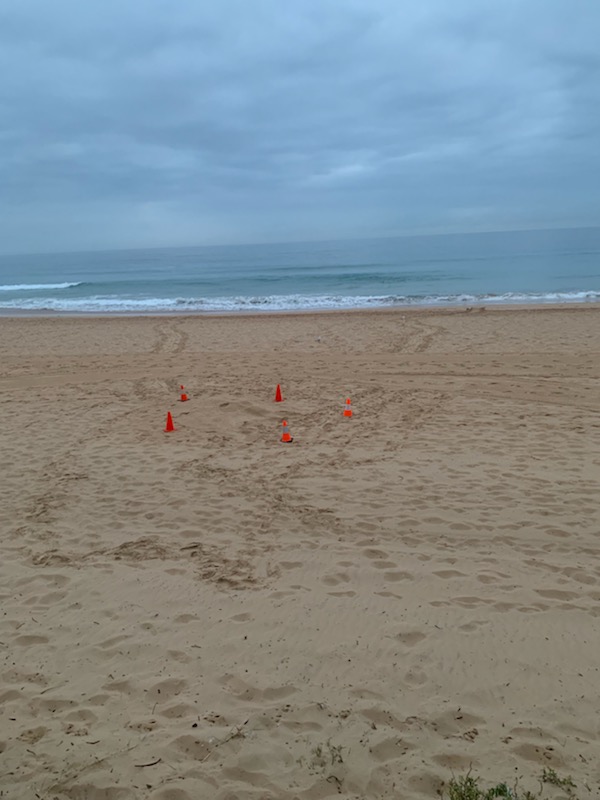
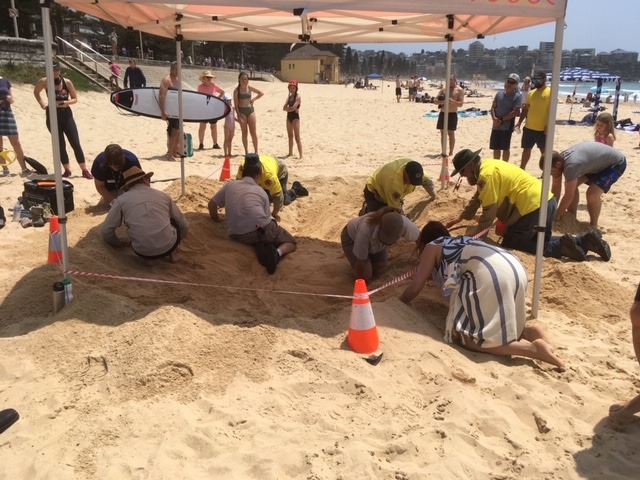
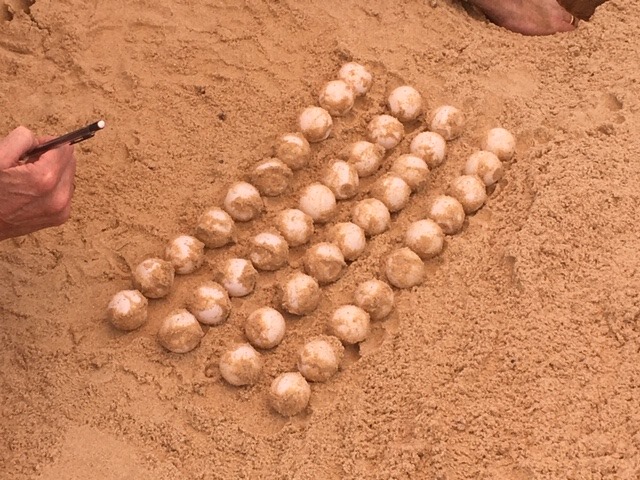
Shark Drumlines Going In Off Our Beaches
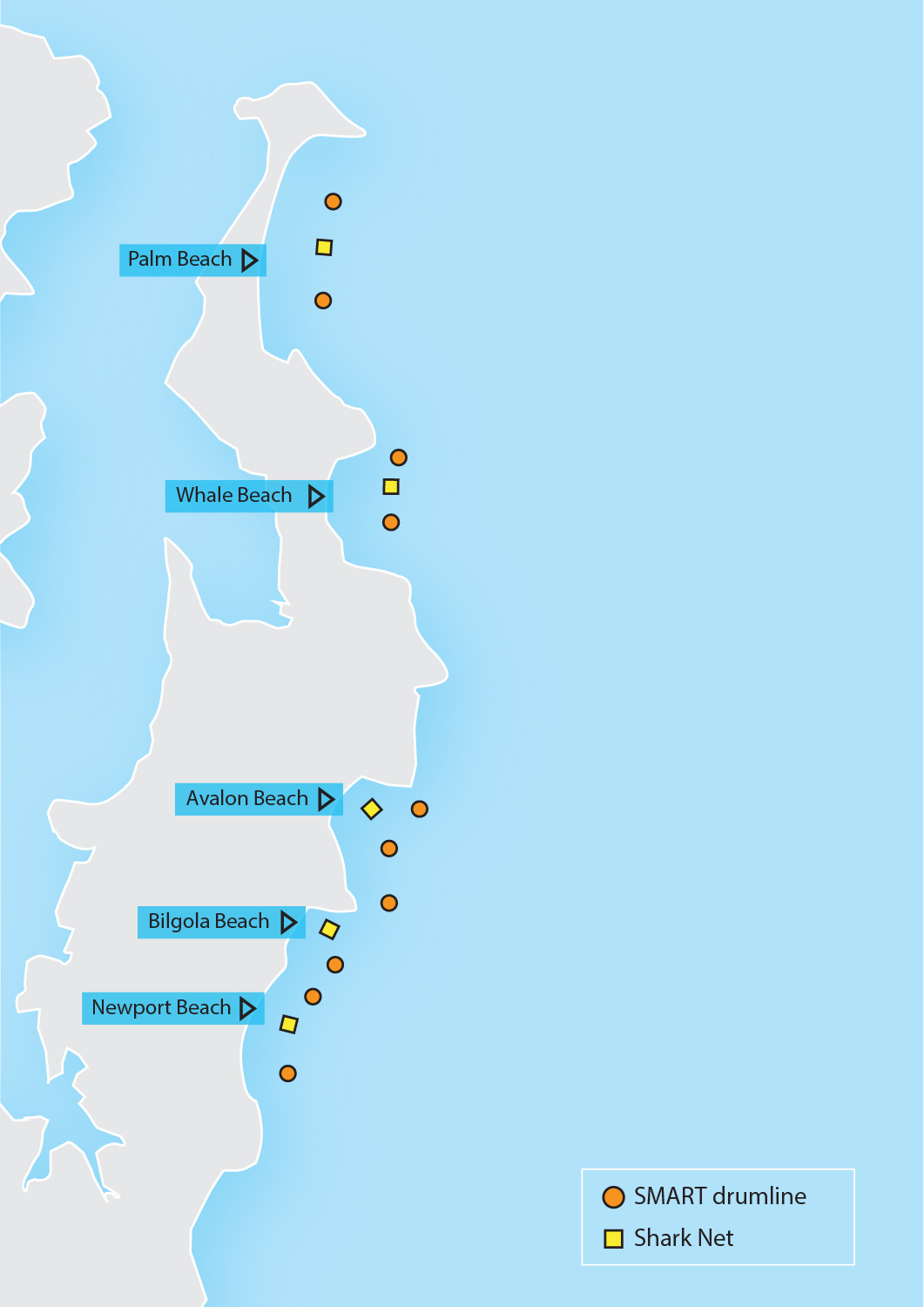
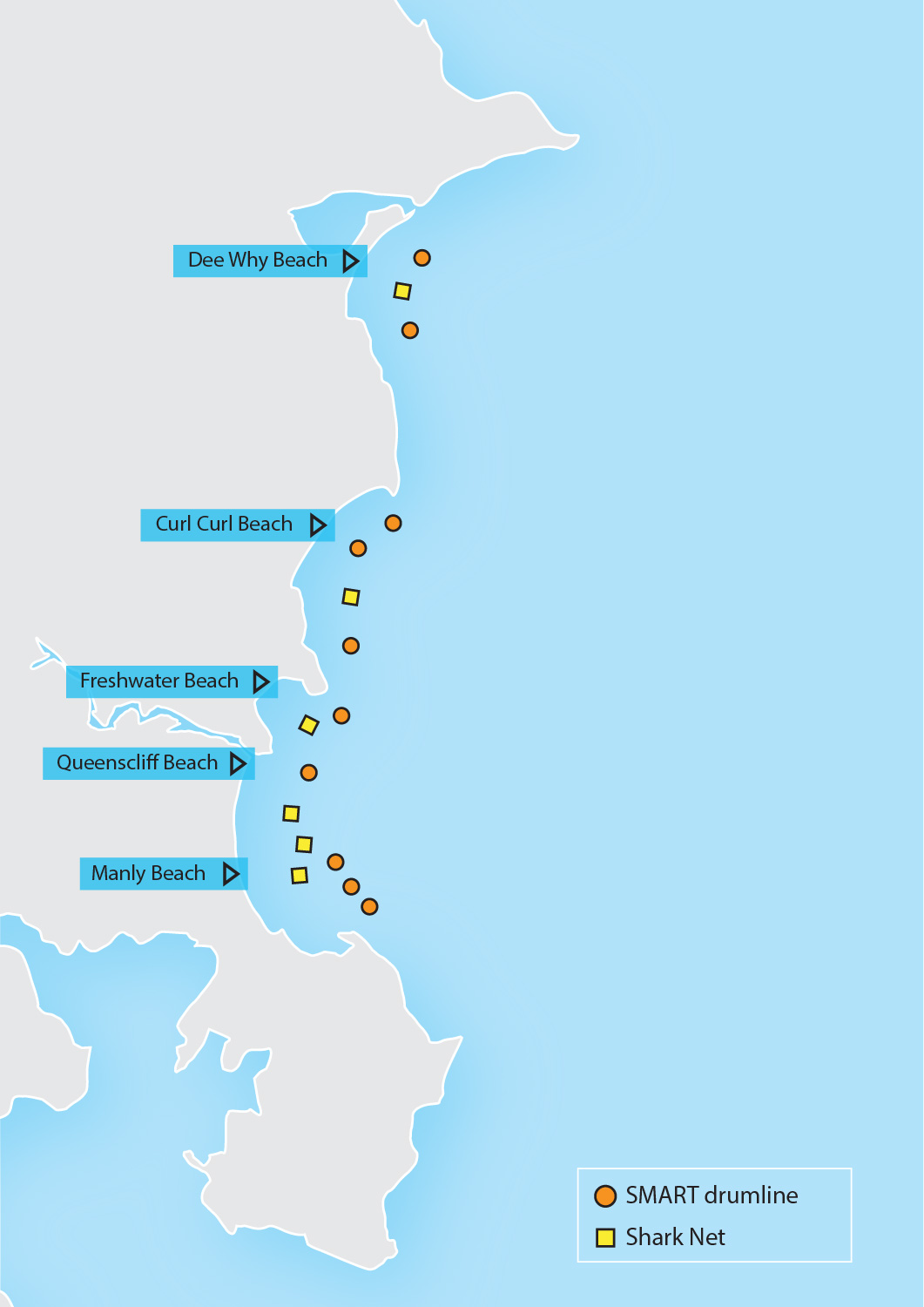
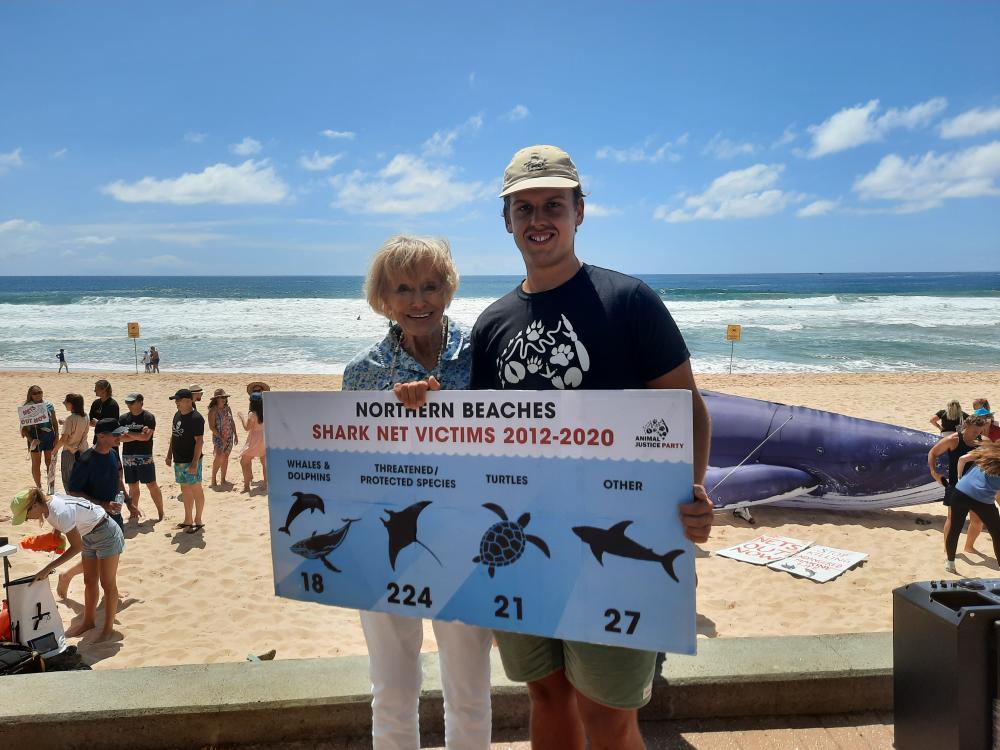
Valerie Taylor AM, 88, and Bailey Mason attended the Shark Nets Out Now protest at Manly on Saturday December 3rd, 2022